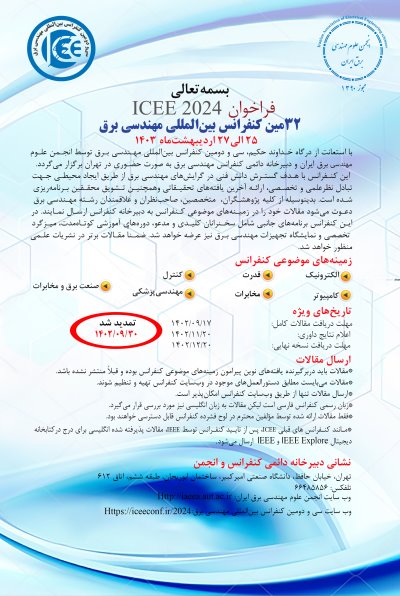0% Complete

نویسندگان :
کلمات کلیدی :
چکیده :
لیست مقالات بایگانی شده
محدثه امیریان چایجان - رضا آقائی زاده ظروفی - مسعود رضا سهرابی
Seyed Pedram Monazami - Raheleh Davoodi
زهرا معروفی - امیرحسین مولازاده - مهرداد اردبیلیپور
Zahra Moradi-Shahrbabak
Hamidreza Javanmardi - Alireza Hamedi - Mahya Rahimzadeh
Amin Monemian Esfahani - Leila Yousefi
Neda Nasiri - Ahmad Fakharian - Mohammad Bagher Menhaj
Mohammad Reza Hosseini Varmazabadi - Ali Parhizgar - Ebrahim Abiri - Abdolreza Darabi
Shayan Zaimi - Ashkan Moradi Naserkhani - Sharara Rehimi - Amin Karimi - Rahmatollah Mirzaei - Hassan Bevrani
Amirhossein Tajik - Hoda Jalalkamali - Hossein Nezamabadipour



